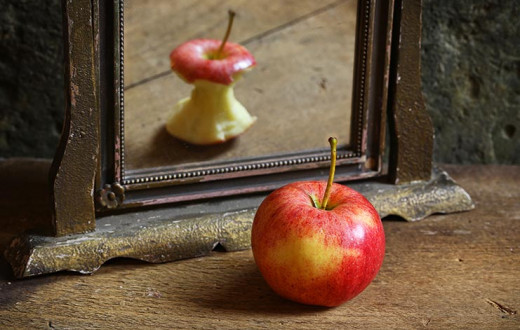Montreal, Canada

Today is celebrated as New Year day in India; year 2070.
There was a very pious man, who was a king as well. He lived 2070 years ago. So in India, the years were named after him, from then onwards the years were named after him as Vikram years. So this New Year is Vikram 2070.
Before Vikram, the years were named after Lord Krishna; therefore, it is 5,114 years today.
The New Year system is based on the cosmos, it begins when the Sun or the Moon enter the first point of Aries. Today, it is the moon that has entered, and after two days, i.e., on April 13, the sun will enter the first point of Aries, which is when we celebrate Vaisakhi, also a New Year day.
So, half of India celebrates with the moon, and the other half celebrates with the sun. There is no uniformity there too; there is freedom for everyone to celebrate what they want.
In the states of Punjab, Bengal, Orissa, Tamil Nadu, and Kerala, they celebrate the New Year with the solar calendar, i.e., Vaisakhi.
In Karnataka, Maharashtra, Andhra Pradesh, and many other Indian states, they celebrate today, i.e., as per lunar calendar. In The Art of Living, we celebrate every day!
On New Year day, the tradition is to eat a little bit of neem leaves, which is very bitter, and jaggery, which is sweet. It is meant to imply that life is both, bitter and sweet; you have to swallow both, that is the message.
Time gives you both, bitter and sweet experiences. Don’t think it’s only friends who bring sweetness, friends can also bring bitterness. And don’t think enemies always bring bitterness, enemies can also bring some sweetness. So, life is a mixture of all the opposites; like it is here, cold and yet warm, isn’t it? There is snow all around, yet it is pleasant. The New Year begins like that.
Once upon a time, all over the world, everyone followed the same calendar; the Lunar Calendar. Even today, in Turkey and Iran, people follow the Lunar Calendar; March is the New Year.
King George, of London, wanted the New Year to commence in January because he was born in that month. It was his New Year, no doubt, but he imposed it upon the entire British Kingdom! Now, this happened sometime in the Eighth or Ninth Century, but people would not stop celebrating the New Year in April. So King George called it April Fool’s Day. He said that anyone who celebrates in April are fools, and that is how April 1 came to be known as Fools Day.
Did you know that the names of all the months and days are in Sanskrit?
The week days were named after the seven planets. If you say Sunday, it is Sun’s day. Monday is Moon’s day. Tuesday is Mars, Wednesday is Mercury, Thursday is Jupiter, Friday is Venus and Saturday is Saturn’s day. These are the seven planets after which the week days were named. Actually, this is all in Sanskrit! The original calendar was made in Sanskrit in ancient India; from there it went to Egypt.
The twelve months were named after the twelve Zodiac constellations, i.e., the position of the sun in each constellation (whether it is Aries, Taurus, Gemini, Cancer, Leo, Virgo; accordingly, the names of the months were managed). Thus, the names of the months correspond to the words in Sanskrit.
Dashambar is December; dash means ten in Sanskrit, ambar means sky, Dashambar means tenth sky. Navamber is November, means ninth sky. October is Ashtamber, means eighth sky. September means seventh sky.
See, one word could be accidental, but if all the names match, then that is not accidental.
Shasht means sixth, i.e., August. It is not the eighth month, August is the sixth month (if you start from March).
If you come to February, we often say fag end of the year! February is the twelfth month, the last month of the year. March is the first month of the New Year.
Usually, the Lunar New Year falls on 20 March, so that is when the New Year begins. However, all this was distorted by one British king, who captured and influenced almost half the world, including USA and Canada. So, King George changed the New Year according to his own birthday. This is the story!
Unfortunately, in India, many people have forgotten the traditional names, and meaning of the names of the months. The names as per the Lunar Calendar are: Chaitra, Vaishakh, Jyeshta, Aashaadh, Shraavan, Bhadrapad, Ashwin, Kaartik, Margasheesh, Paush, Maagh, and Phalgun.
Each month’s name in the Lunar Calendar corresponds to 27 stars in the cosmos, in our milky way. Two and a quarter stars form one constellation. Multiply that by 12 constellations. It equals 27 stars.
When the full moon evidently comes to one of the stars, that month is called by the name of that star. For example, there is a star by the name of Chitra. When the full moon comes to Chitra, then it is the first month of the lunar calendar, i.e., Chaitra. The next month will be Vaishak. It is amazing, how precise calculations were made to see under which star the moon falls, and how the months are calculated.
In the Lunar Calendar, there are only 27 days in a month. Therefore, every 4 years, there is a leap month, i.e., one extra month. Just like how in the leap year, you get 29 days in February; in the Lunar Calendar, you get a leap month, i.e., one extra month.
In the Solar Calendar, you get one leap day only, just like the English calendar.
Sometimes, Vaisakhi is on 13 April, sometimes, it is on 14 April. Once in four years, one day difference happens.
There is a cycle for everything. Different things happen at different times. So, this time, more sattva is coming.
Do you know, we will be starting an Osteopathy College there? It has come up very nicely. Even our Ayurveda College is doing very well. It has received six distinctions, out of ten. Do you know, it is known as one of the best Ayurveda Hospitals there? It heals people of Varicose Veins and related problems, without any surgery.
It is the same with our Shakti Drops, it has amazing results. They are doing lot of research now on Shakti drops. It is useful in so many things, swellings, aches, pains.
The research will take about a year to get back all that information.














































